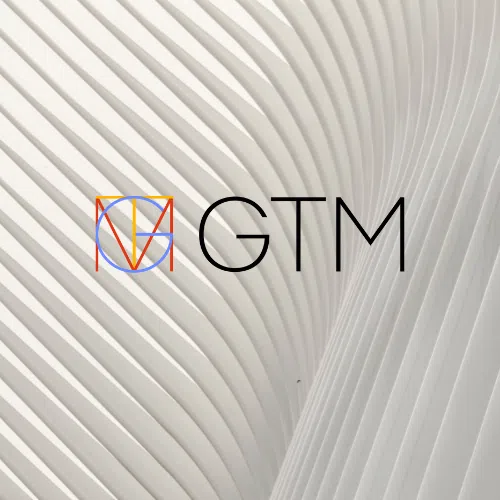In 2020, the IRS proposed new changes to the Information Return of U.S. Personas with Respect to Certain Foreign Corporations – known as Form 5471 – which will impact reporting requirements for prior tax years for US taxpayers with ownership in foreign corporations.
In GTM’s recent webinar session, Back to the Future: Significant Changes Expected to the 2020 Form 5471 (Again), we examined the changes to the form expected for tax year 2020. This included a detailed overview of new schedules Q and R, which require taxpayers to provide significant amounts of information not previously needed.
Participants asked several questions during the session, including some that we could not address due to time constraints. Here, we address them all, in detail.
Have additional questions on this topic? Reach out to Brian Abbey and Raymond Wynman. Watch the original webinar on demand here.
Form 5471: Schedule Q & Schedule R
Question: On Schedule Q, should column (xi) Net Income tie to Schedule H Line 5 Current earnings and profits?
Answer: In some cases, it might. However, it might not if E&P and Tested Income are not the same number. Tested Income, which is essentially a computation of the CFC’s taxable income, may include additional adjustments not considered for E&P purposes. E.g., meals and entertainment, fines & penalties, 163(j), etc.
Question: Are there any checks and balances within Form 5471 to ensure Schedule Q is completed correctly?
Answer: One potential check would be to make sure that Tested income (loss) on Line 6 of Schedule I-1 ties to Column (xiii) Net Income of Line 3 Tested Income Group on Schedule Q. If the High Tax Election is made and some income is kicked out into the residual group, then Line 4 should be factored into the equation, but in totality the amounts should still agree.
Question: Does the need to describe the nature of the distributions on Schedule R seem duplicative considering that distributions by category are being provided on Schedules J and P already?
Answer: In a sense, yes. However, Schedule R asks for additional information. Schedules J and P track the distributions themselves and it can be ascertained what amounts relate to dividends or PTEP distributions, but Schedule R tracks the distributions themselves to the shareholder(s), including distributions that reduce basis or create capital gain. It is now necessary to provide Section 986(c) gain or loss on a PTEP distribution, the amount of dividend income, or the capital gain related to an excess distribution. That information is not otherwise found on Form 5471.
Question: Is Schedule R intended to record only distributions to the U.S. or any distribution from a foreign corporation?
Answer: It is not specified that Schedule R should be only for distributions from top-tier CFCs to their U.S. Shareholders. Therefore, all CFCs that make distributions during the tax year should report those amounts on Schedule R.
Note – the result may differ if it is a foreign-to-foreign distribution rather than a foreign-to-U.S. distribution. For example, in a distribution of PTEP from one CFC to another, there would be no 986(c) gain or loss recorded in column (d) as 986(c) is only relevant when a CFC makes a distribution of PTEP to a U.S. Shareholder.
Question: Are the assets reported on Schedule Q column (xiii) representative of a tested unit’s total assets or QBAI?
Answer: As the purpose of that information is to show how interest expense could be apportioned under the asset method, the number reported should be the amount of total assets. If the Modified Gross Income method is utilized, column (xiii) would be strictly informational.
Note – since the assets reported are for interest expense purposes, they should be the average total assets measured using the appropriate method under the Section 861 regulations (i.e., tax book value).
Question: If no high tax election will be made, should Schedule Q only reflect items in the Subpart F or Tested Income categories?
Answer: For the most part, yes. Residual income is income that does not fit into any other category. The high tax election “kicks out” income from either Subpart F or GILTI and thus it will not fall into any specific category. Therefore, it gets reported as Residual category income.
However, another example would be a dividend received by the CFC from another CFC. Dividends that are not Subpart F by way of an exception (de minimis, look-thru, same country, etc.) are also “kicked out” of tested income as ‘related party dividends’ (see Schedule I-1) and therefore would also fall into the Residual group of income.
Question: If a CFC is one tested unit in and of itself, should its name be populated on each line 1 on Schedule Q?
Answer: Yes, the correct approach would be to repeat its name on each applicable line.
Question: How do you determine the amount of a tested unit’s assets to report on each line of Schedule Q? In other words, how do you allocate assets to different income groups?
Answer: After a tested unit’s average asset value is calculated under the tax book value method, the assets are then characterized under the rules of Regulation 1.861-9T. Essentially, assets are characterized based on the type of income that they generate or are held to generate. When assets can produce multiple categories of income, the income yield of each such asset is analyzed to determine the ratio of gross income produced by income group.
Example –
CFC has three assets on its books:
Asset 1 – $100
Asset 2 – $300
Asset 3 – $200
Asset 1 produces solely Subpart F. Asset 2 produces solely GILTI. Asset 3 produces both Subpart F and GILTI.
During the tax year, CFC produces $5 of Subpart F and $15 of tested income.
The assets are allocated as follows:
Subpart F: 100 + (200 * (5/20)) = 150
951A: 300 + (200 * (15/20)) = 450
Automated Tax Technology
Question: Is there any insight into whether OneSource is planning to address Schedule Q and R in a timely release?
Answer: While we certainly cannot guarantee it, we are staying close to OneSource on this topic. The indication is that these schedules will be automated within the software in one of the slated summer releases. We will keep you posted as more concrete information becomes available.
951A Category Income
Question: Is there no longer a requirement to file a separate Schedule J and P for 951A category income?
Answer: That is correct. There is now clarifying language with respect to both schedules. 951A category income/PTEP should be reported using the General category version of the schedules. Treasury has supported the view that GILTI is a shareholder level calculation as opposed to a CFC level calculation.
Question: If a 951A Category Schedule J and/or P was used in prior years, should beginning balance adjustments be used to move the E&P to the General Category version of the form in 2020?
Answer: While we understand that the result is additional work, if the beginning balance does not tie to the prior year ending balance, it is recommended to use beginning balance adjustments (and an attached schedule of those adjustments) to avoid confusion and ensure substantial completion of the forms.
General 5471 Form Change Questions
Question: Is a Category 1a, 1b, or 1c filing requirement still necessary if all Section 965 PTEP has been exhausted through distributions?
Answer: No. A U.S. Shareholder who meets the Category 1 filer definition (owing the stock of a Specified Foreign Corporation on the last day of the year that such corporation was a Specified Foreign Corporation) only remains a Category 1 filer if 965 PTEP remains undistributed.
Essentially, the Category 1 filer was created to require U.S. Shareholders of foreign corporations who were not CFCs (and thus had no continual Form 5471 filing requirement) to report their 965 attributes.
Question: Are any changes coming to Form 8990 specifically related to CFCs? For example, new line items or sections to report their 163(j) limitation or a group election?
Answer: We have not been made aware of any anticipated changes to the form for tax year 2020. However, a Rule by the IRS on 1/19/2021 indicated changes are expected for tax year 2021 to reflect things like the CFC group election and the safe-harbor election.
Question: Can you elaborate on the tested unit rules?
Answer: We held a previous webinar to specifically discuss the GILTI High Tax Exception and cover those rules more in-depth. You can find a link to it here.
We hope this post is helpful as you assess the impact of upcoming tax changes on your business. View our full library of International Tax insights here.



